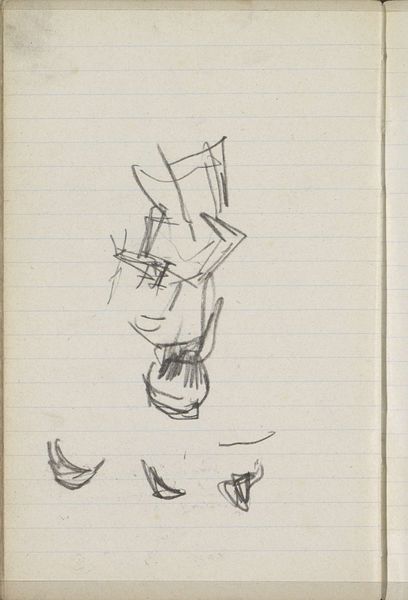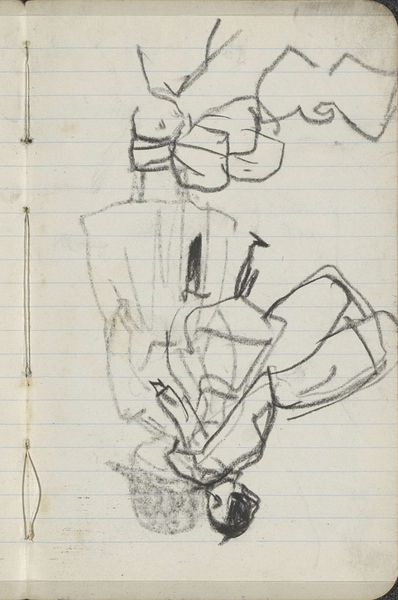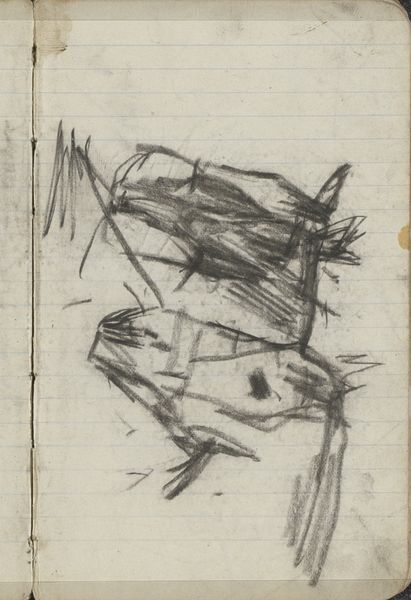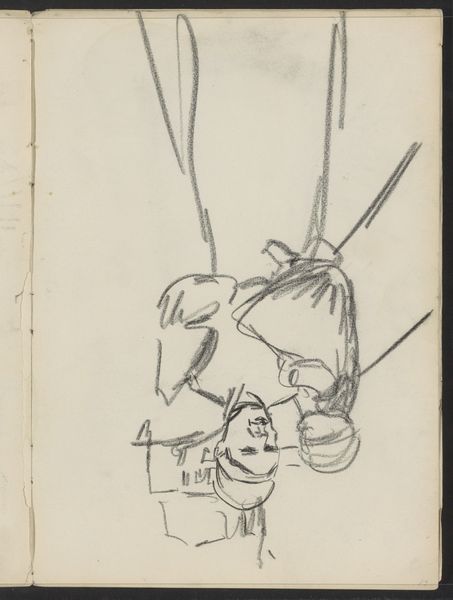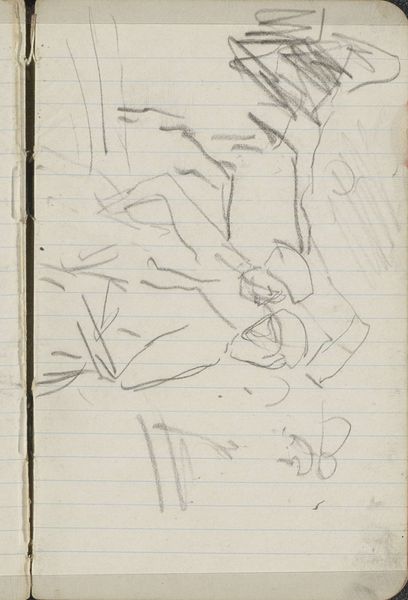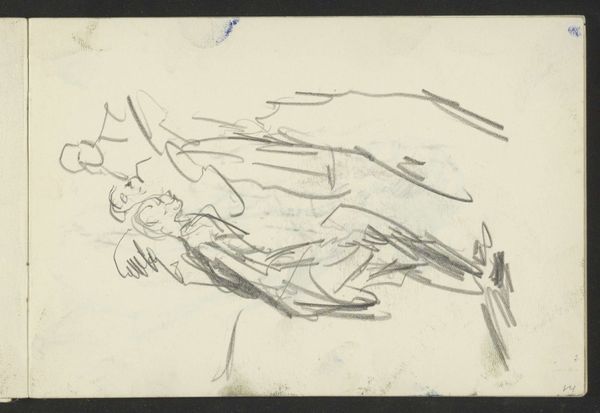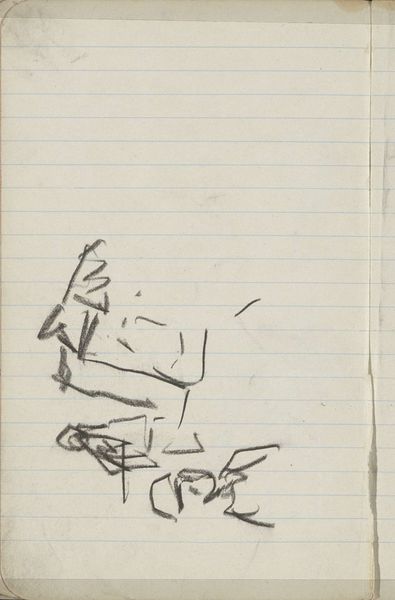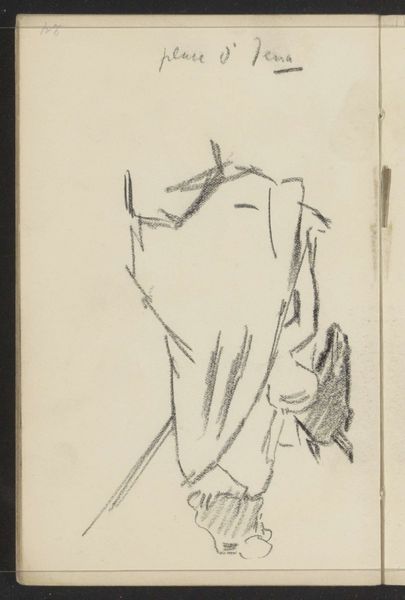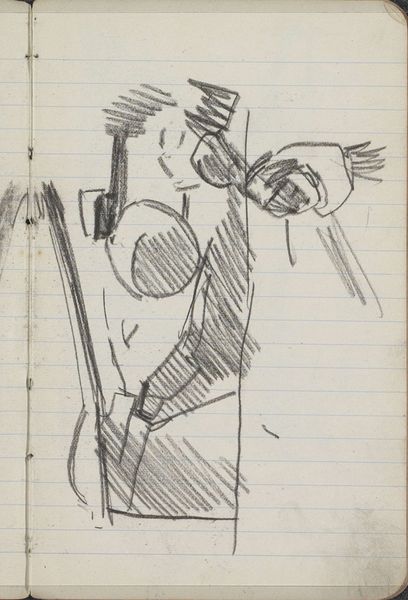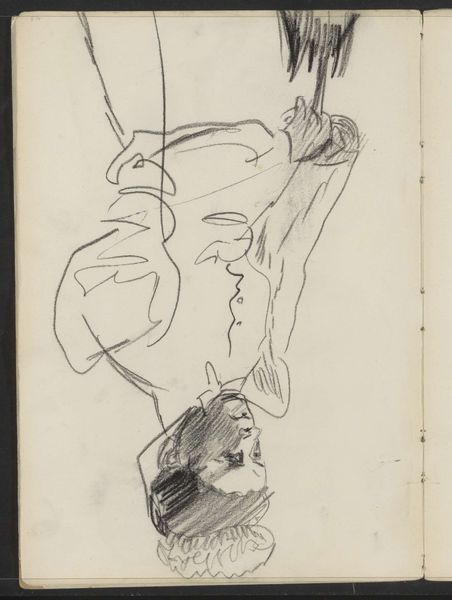
Copyright: Rijks Museum: Open Domain
Editor: This is George Hendrik Breitner's "Figure on a Tow-Boat" from around 1898 to 1902. It’s a pencil drawing, very simple and raw. What stands out to me is the movement captured with such minimal lines, and how he’s included it on lined paper as if its from a personal notebook. What symbols or meanings do you find embedded in this seemingly simple sketch? Curator: The lined paper itself acts as a grounding element; a symbol of structure imposed upon a fleeting moment. Consider the tow-boat; a symbol of industrial progress but here reduced to supporting a single figure, possibly burdened or in transit. Are they being pulled along by progress or merely drifting? Editor: That's interesting. I hadn’t thought of the tow-boat itself as a symbol. So, is the figure's ambiguous posture perhaps representing uncertainty about the future? Curator: Perhaps. And look closely at the figure – are they standing tall or slumped with fatigue? The lack of detail allows us to project our own anxieties onto them. Think of similar figures in folklore or mythology; travelers, wanderers, those at the mercy of greater forces. Does this sketch echo those archetypes for you? Editor: I see what you mean. The ambiguity makes it timeless. So, it’s less about a specific person and more about a universal experience of being carried along by life, by circumstance. Curator: Precisely. And remember, Breitner was deeply engaged with depicting the dynamism of city life. Perhaps the most poignant aspect of the drawing lies in its capacity to trigger the viewer's empathetic association and comprehension. Editor: This was really insightful, viewing it less as a simple sketch and more as a vessel for universal symbols! Curator: Indeed. And the beauty of art lies in that transformative process – allowing a new perspective on history as memory, or anticipation of the times to come.
Comments
No comments
Be the first to comment and join the conversation on the ultimate creative platform.


